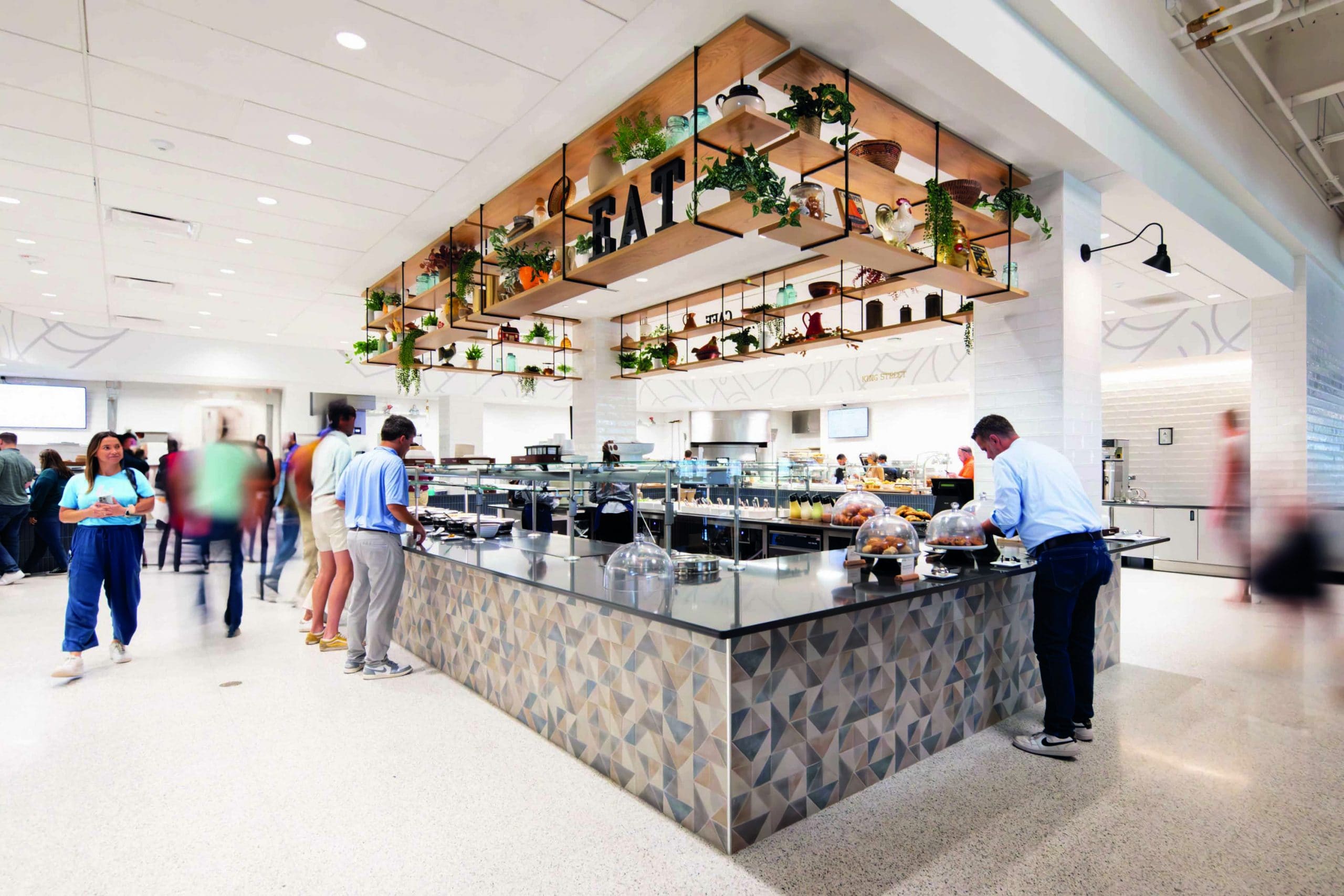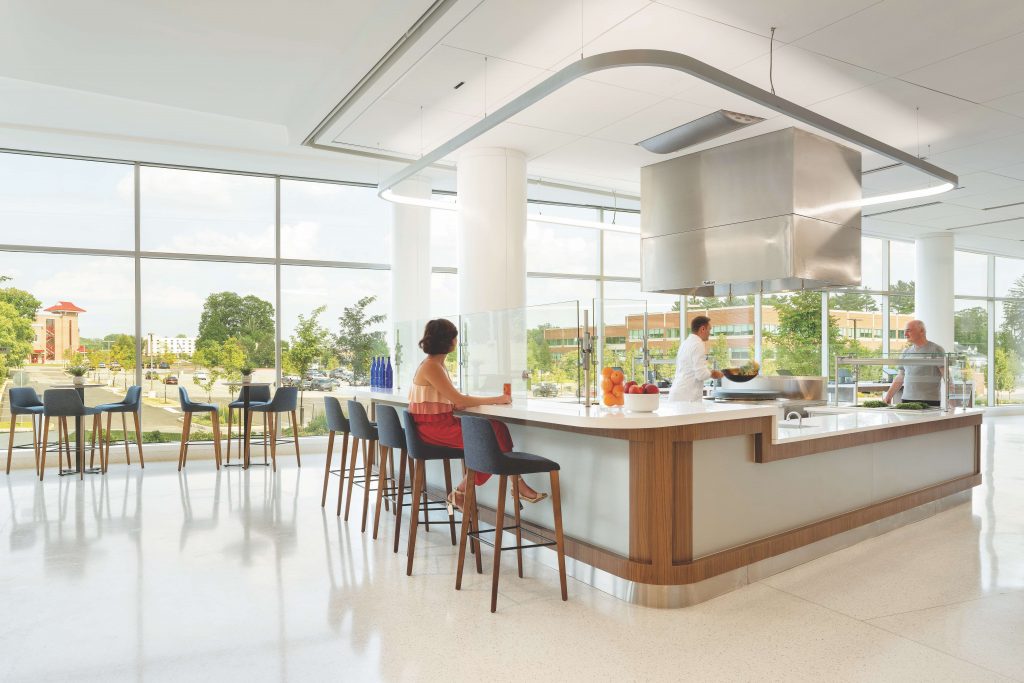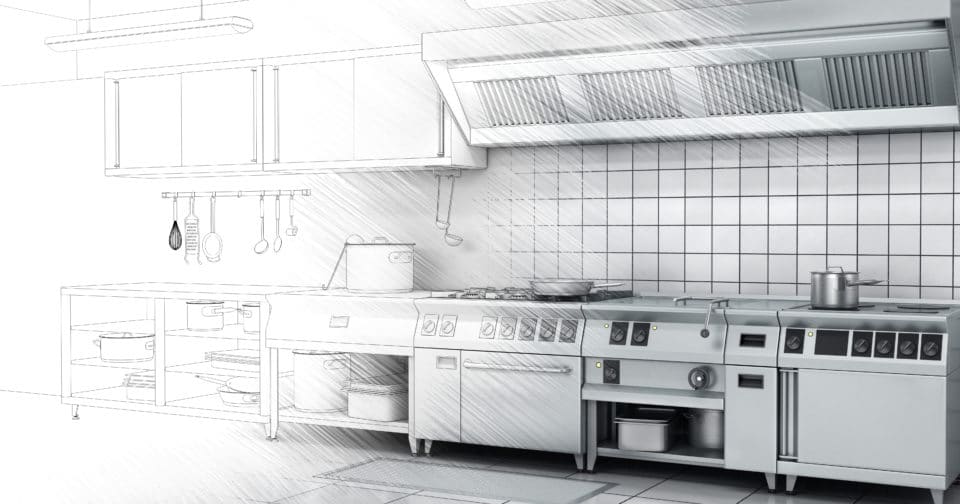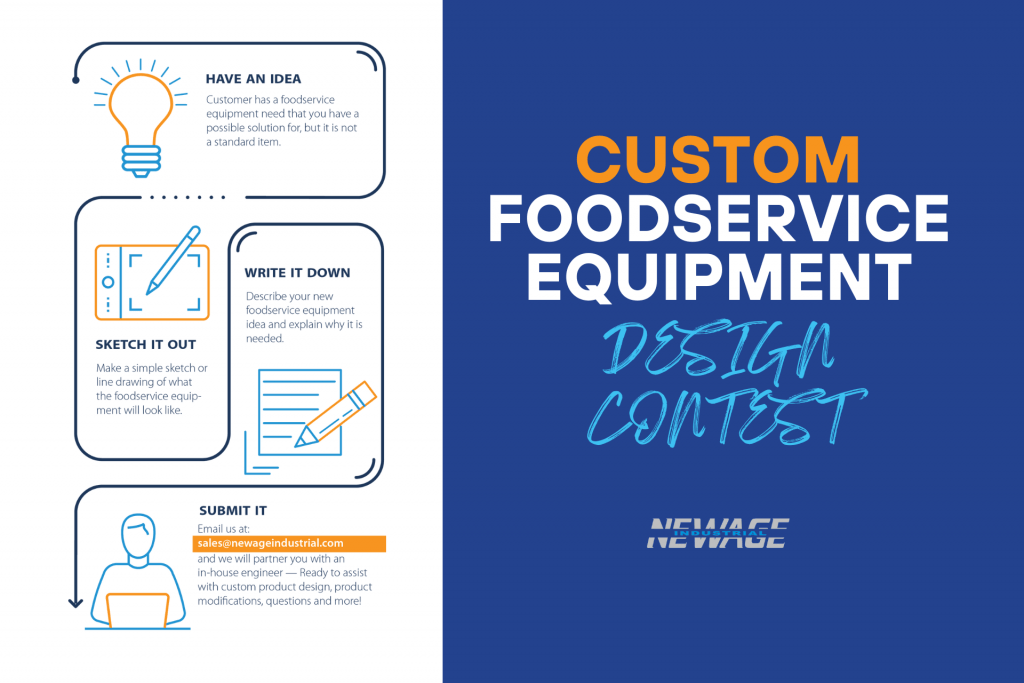
Bandwidth Inc., the global cloud-communications software company, needed just the right dining outlet for its new headquarters in Raleigh, NC, in July 2020. Executives got in touch with Cini-Little International in search of the best solutions.
The Germantown, MD-based global consultancy stepped up to multiple challenges by combining savvy experience with agility and flexibility. The result is a brand new café that makes best use of the available space, saves the client subsidy funds, and ensures that the dining concept will remain fresh and vibrant for the campus’s growing population.
There are currently approximately 800 associates onsite, with a full complement of as many as 1,700 expected over the next five years.
Cini-Little guided Bandwidth – whose clients include corporate giants including Amazon Web Services, Cisco, Google, Microsoft, RingCentral, Zoom, Genesys, Five9 and Uber – through the process, something with which the company had no previous experience.
The new operation includes a primary café, a virtual mobile-ordering kitchen, a barista bar, four micro markets, and a special events center referred to as the Barn. The consulting firm also helped with the selection of a foodservice operator.
Work on the project began in August 2020, and the grand opening took place in mid-August of 2023. Making sure that its associates are well cared for has been a key to Bandwidth’s success. The same month that the new café opened for business, the company once again won a Best Places to Work award from the regional Triangle Business Journal. Winners were selected based on employee engagement survey results, which measured 30 culture and satisfaction drivers that are critical to an organization’s success.
Food-centric client
“We faced a couple of challenges,” recalls Kip Serfozo FCSI, design director for Cini-Little. “One was that Bandwidth is a very food-centric client. As a company they are very in tune with local food, with healthy and high-quality food, and so our challenge was to create an operation whereby the kitchen staff could actually make all the food from scratch. In other words, they’re not getting in all those convenience items with all the preservatives. They are literally cooking all the food from scratch.”
A shortage of programmed continuous space proved a wrinkle, according to Chuck Schuler, the consulting firm’s project manager–MAS. His team responded by utilizing a separate space from the servery and creating a virtual kitchen exclusively for pre-order.
As Serfozo explains, “What we did was create that kitchen and put the salad bar right in the middle of this food hall so that the first thing you see is curated salads. You can do self-serve salad, or the salad can be made by a chef. But it really nudges the associates to make healthy choices with fruits and vegetables, and then, of course, there were other stations for different food items.”
Another challenge that Serfozo and his associates faced was the fact that the campus has multiple buildings spread across a good-sized area. “They had a building for congregate dining, a ballroom or special-events facility, which was in another part of the campus. So the challenge was, how do you serve high-quality foods with the associates spread across different areas?”
Cini-Little set about creating a catering kitchen near the special event hall, referred to as the Barn. “The food can be prepped and readied in the main kitchen and then be brought over to the catering kitchen in the Barn to be finished off and cooked,” says Serfozo. “That way they are able to serve high-quality banquet foods.”
Unique foodservice modeling
Schuler says the project offered “unique foodservice modeling, with pre-order café, mobile ordering virtual kitchen and a special events center, not to mention the chance to work with the fantastic Bandwidth team.”
The process included visioning sessions, project goals and objectives development, programming and financial projecting, Schuler recalls, as well as schematic design followed by full design “and then supporting Bandwidth with sourcing Constellation Group, as the partner to operate the foodservices.”
The location included a stairwell that split up the space, leaving the consultants short of back-of-the-house space and compromising traditional servery space. They eventually came up with an area, just adjacent to the stairwell that would be used as a virtual-kitchen operation devoted to mobile and kiosk ordering, with dishes picked up at the barista bar in front of the kitchen.
The strategy was twofold: one, to accommodate what would eventually be a much larger associate population, and to offer a different service model targeting slower periods such as holidays. Approximately 40% of subsidies are lost, Schuler points out, around the major holidays each year: Christmas, Fourth of July, Labor Day, and Memorial Day. Cini-Little’s design allows the operator to offer a pared-down service model during those times when attendance onsite is substantially lower.
“You can run the ghost kitchen with the barista bar and close the café,” Schuler explains, “and you’re not putting yourself in the typical position, where you are closing stations in the café and it looks half empty and undesirable from a guest experience standpoint. We wanted to keep it just a little bit different than what we were serving in the actual servery. I didn’t want to incorporate pizza because we had a pizza station; we’ve got a deli, we’ve got an action station, we’ve got salad bar. We wanted a little bit of an out-of-the-box menu that could be changed up to keep it interesting and a sustainable program.”
Many solutions
One of the primary takeaways from the project, Serfozo reflects, is the need to think outside the box in the operating model.
“It doesn’t always have to be a traditional café or food hall,” he says. “There are many solutions for reaching your audience, and providing high-quality foods that don’t become stagnant and the same things over and over the way a traditional café sometimes can.”
Whether it is a virtual kitchen or pop-up mobile stations that go out into the servery, “you always have to factor that into your programming,” Serfozo says. “It’s all about not just accepting the space, the box that you are given, (and) looking at what the ultimate demand is going to be and how are we going to meet it, and how are we going to write it into our operating model.”
One more challenge that Serfozo and his team had to grapple with was, as he puts it, “to make this super labor-efficient given the climate of foodservice labor today. We had it set up so that every foodservice function was kind of looped together. The virtual kitchen, the c-store, the coffee shop concept were literally adjacent and connected to the main kitchen, so that the flow of goods and labor was super-efficient. That way the operation could be run by the least amount of labor that the operator could really command.
Howard Riell




